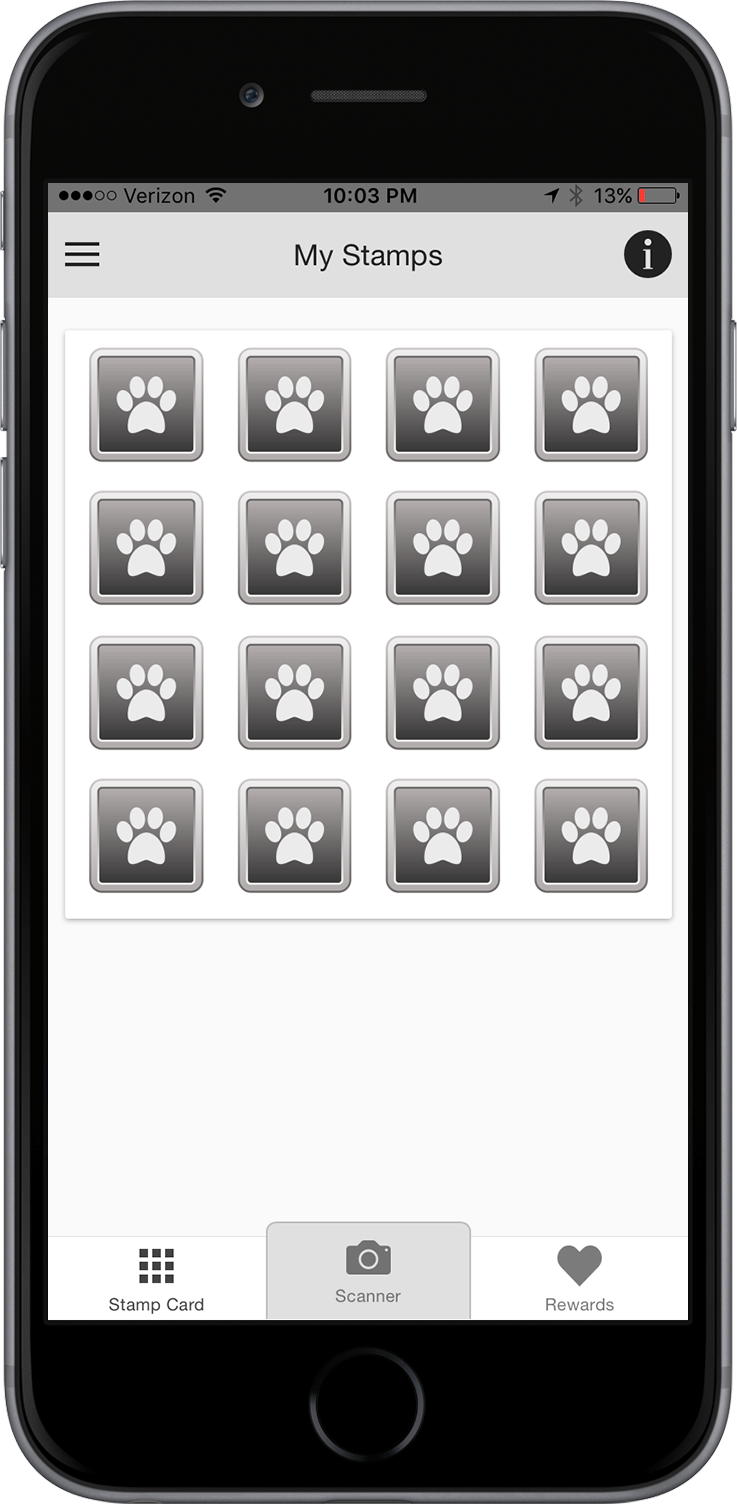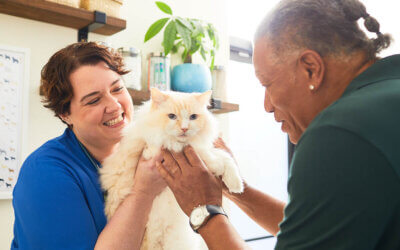Veterinarians often tell me “I don’t believe in discounting at my practice.” I usually chuckle a little because every veterinarian I have ever known discounts. And, to be clear, not all discounting is bad. Discounts that drive new business or attract a new lifetime client, such as a free exam for a new puppy, are strategic and business builders. That’s not the type of discounting we are going to talk about in this article. We are going to explore the dark side of discounting veterinary fees — the side fueled by guilt and fear. The reality is that discounting is costing us much more than we realize.
When are we discounting our veterinary fees?
Here are some of the most expensive discounting practices going on in veterinary clinics:
Freebies:
It could be throwing in a free vaccine here and there, removing the charge of the 5th x-ray you took in the case workup, or giving an injection as the pet is heading out the door after being hospitalized because they were already checked out and you don’t want to deal with checking them out again.
Rescue Groups:
Many vets I know offer huge discounts to rescue groups, ranging anywhere from 20 to 50% off or even more if a pet looks like they may have been featured in the Sarah McLachlan animal shelter video. This may range from simple exams to full orthopedic services.
An entire demographic:
Offering 10% to 15% off to an entire segment of a client population, such as senior citizens.
Why do veterinarian’s discount?

I suspect if we analyzed when the discount was applied to the invoice, it would be within a few minutes of walking into the dismissal with the client—right before you have to talk “money”, when the emotions of guilt and fear are the highest. Here are the most common reasons for discounting veterinary fees:
- You’ve exceeded the estimate and you don’t want to deal with the required discussion with the client.
- You feel bad for your client because you know they don’t have the money and you are compassionate.
- You screwed up.
Obviously if you screwed up and need to discount the invoice to make things right with your client, that is the way to go. But, let’s have a look at the impact of the first two scenarios which are much more common in practice.
To discount or not to discount, that is the question

Before you decide to give a discount, there is a critical piece of the puzzle that many vets either don’t know, don’t have access to or just flat out disregard during the “heat of the moment”. That number is your profit margin, your EBITDA (earnings before interest, taxes and depreciation). In order to give something away, you will need to know what your ceiling is. For example, if you are running a business at a 50% margin, meaning that approximately half of what you bill is coming down to the bottom line of the income statement, then you know your “wiggle room”. But if you don’t know this number, then you are basically operating in the dark, trying to hold the moon in the window to bring your rocket ship back home like Apollo 13, instead of using data and information to make informed decisions.
The reality however, is that the average profit margin of a practice in the US ranges from 10-12%. If you are doing a great job, your profit margin may be around 16-18%. For an “average” practice making a 10% margin, 1 dime of every dollar billed is making it to the bank. Where does the other 90% go? The rent, the utility bills, the vendors that supply the drugs, products or new equipment, facility maintenance, insurance, and labor. So, let’s examine the true impact of giving a discount to a client if your practice falls into the “average” profit margin category.
How does discounting hit the bottom line?
Let’s walk through a scenario. A client spends $500 at your practice for an exam and workup for their pet. Your margin on this is $50. That means that after you pay all of your costs, such as the lab rotors, the rent for the exam room, the vendor for the catheter and fluids, the doctor that managed the case, the tech that performed the treatments and the receptionist that handled their admission, you get $50 in the bank.
Let’s pretend right before you walk into the room, you remove the additional x-ray you took (or you omit adding it to the invoice, it’s the same thing). That means you removed $50 off the bill. That is your entire profit margin. What does that mean? You and your team just worked the case for free. And while helping animals is something we are all passionate and motivated about, working for free may not be why you became a veterinarian and it’s certainly not what your staff had in mind. When doctors discount their services, the reality is that it’s the support staff that pays the price.
Here’s why. The only place you can find the money is in your labor costs, because the landlord isn’t going to take less, the gas company isn’t going to take less, and the vendors aren’t going to take less. The only wiggle room you have in your financial statement is what you pay yourself and your staff. The “labor and wages” piece is really the only part of the financial statement that can be adjusted to make the math work to keep your 10% margin. What does that mean? It means that when you give a discount, you are essentially deciding to choose your clients over your team, which wouldn’t be too big of a deal if we paid our staff well. But let’s be honest, we don’t. Maybe we should start choosing our staff more and freeing up more money for raises instead of squandering it with discounting.
How do we break the discounting habit?
First and foremost, do whatever you need to do to find out what your profit margin is. Before you make a decision on this, you need to know the facts. If you have no idea where to start, there are many resources such as VetBooks, the Well-Managed Practice Benchmark Study and several other consultants. Visit vetpartners.org for a list of great people in our industry that can help you detangle any mess you may have.
Reassess your discount programs. Discounting entire segments of a population just for being a certain age may not be the best approach to building your business. My parents are over 65 and while they are always happy to receive a 10% discount, I promise you they do not need the money and would be horrified to think that their 10% discount was taking money away from a single Mom making $13/hr. as a receptionist in the vet hospital. In fact, I think there are many seniors that are much better off than our staff. Consider basing discounts on specific needs rather than age.
Get creative with how to help rescue groups

One of the biggest discount dilemmas facing veterinarians is how to deal with rescue groups. If you want to contribute to rescue groups with massive discounts, you are going to need to fundraise to support your goodwill. You can’t give away something you don’t have. What’s even worse is taking money from your staff without them knowing, to give to someone else. So, what are some potential solutions?
- Start a loyalty program and allow clients to “round up” to donate to your charitable cause.
- Start a 501c3 fund or join forces with a rescue group and start asking for donations from your clients.
- Open your clinic during a time you are normally closed (like the first Sunday morning of each month) and make this your donated time. Allow your staff to volunteer for this good cause. The difference with this approach is that your staff are choosing to give if they want.
- Have an honest conversation with your rescue group. Many people think the veterinary profession is overflowing with profit. It’s your job to paint a clear picture for everyone involved and then brainstorm ways to collaborate.
- Set a monthly budget that can be allocated toward rescue groups.
Start a loyalty program instead of discounting veterinary fees
 Loyalty programs are a great way to allow clients to earn rewards at your practice for spending more money or participating in activities that grow the business. For example, you can gain new clients by rewarding loyalty points to clients who refer a friend. Loyalty programs put the client in charge of “earning” rewards (discounts off future purchases) and keep the veterinarian out of it.
Loyalty programs are a great way to allow clients to earn rewards at your practice for spending more money or participating in activities that grow the business. For example, you can gain new clients by rewarding loyalty points to clients who refer a friend. Loyalty programs put the client in charge of “earning” rewards (discounts off future purchases) and keep the veterinarian out of it.
Start a loyalty program instead of discounting veterinary fees. Loyalty programs reward your best clients and put them in charge of “earning” discounts off future purchases.
The most important thing you can do though is to raise your self-awareness and always ask yourself “why am I about to give this discount?”. This is the only way to break the habit. When you are facing the decision, go take a look at the big soft eyes of your veterinary nurse who’s working to the bone, your kennel tech who’s cleaning up the last parvo round, or your receptionist that just got chewed out for calling Ms. Smith’s dog a boy instead of a girl. Think of your team and hold strong. And, it never hurts to give better estimates right up front!

Stacee Santi, DVM is the CEO and founder of Vet2Pet, where she and her team developed the only customizable, all-in-one client engagement platform for veterinary practices. Regarded as a key opinion leader on innovative strategies to connect with clients and improve patient care and client service, Stacee is a renowned national speaker and author. She’s also the former roller skating champion of New Mexico. You can reach her at [email protected].



